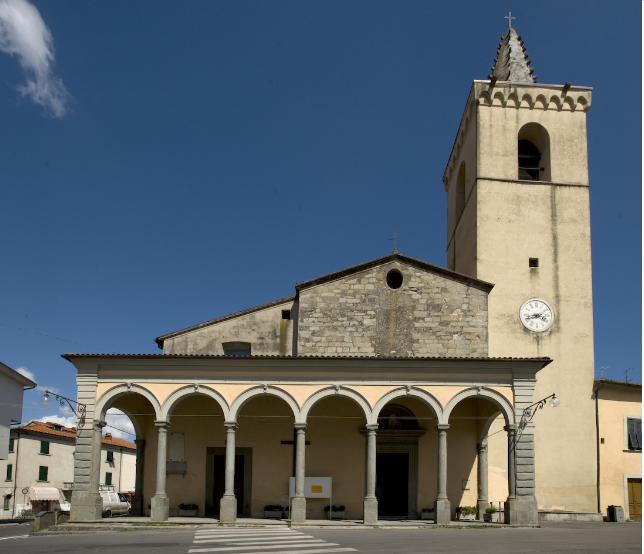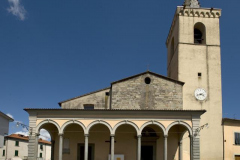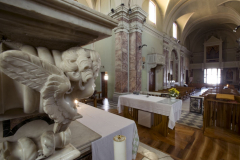
The church of Saint Peter is one of the most ancient churches of the Pistoian countryside. The first informations about it are dated back to the XII century. The current shape is the result of the transformations and expansions of 1759, which altered the original Romanesque nucleus. The structure of the eighteenth-century rectory is on the south wall, where we can see the current courtyard, heritage of the medieval cloister of the collegiate church.
Inside the parish church there is a sixteenth-century painting about the ‘Assumption of the Virgin between Saints Peter, Thomas, John the Baptist and Leonard’ by an anonymous painter from Pistoia. The Virgin offers St. Thomas her Girdle (venerated in the Cathedral of Prato). Saint John the Baptist points to Madonna and turns his gaze towards the outside of the painting; Saint Leonard, patron saint of prisoners, as indicated by the chain, his attribute, is next to him.
There is also an important Agati-Tronci organ, already restored in 1898 and subjected to further restoration in 1985.
The most interesting artwork is the ‘Sacred Conversation with Saints Peter, Sebastian, Cosmas and Sylvester’, painted by Leonardo Malatesta from Pistoia between 1518 and 1521. The altarpiece was commissioned by the Opera di S. Pietro for the main altar of the church and it was then removed from there and placed on the left altar. On the right, in the foreground, Saint Sylvester is depicted followed by Saint Cosmas. The presence of Pope San Silvestro is linked to the cult of Lent or wolf fasting, that is, the ancient custom of fasting on the last day of the year linked to the arrival of the wolves and bears that descended into the plains from Montalbano in the winter to feed themselves. Saint Sylvester, Pope from 314 to 335, ordered fasting to be observed on certain days of the year. According to the miracle reported by Jacopo da Voragine, Saint Peter appeared to Sylvester before meeting the dragon, showing him how to tame the ferocious beast and inviting him, once the task was completed, to eat the bread he had prepared for him. The custom of fasting was observed by the inhabitants of the area until 1586, when it was indicated as a practice linked to superstition.





